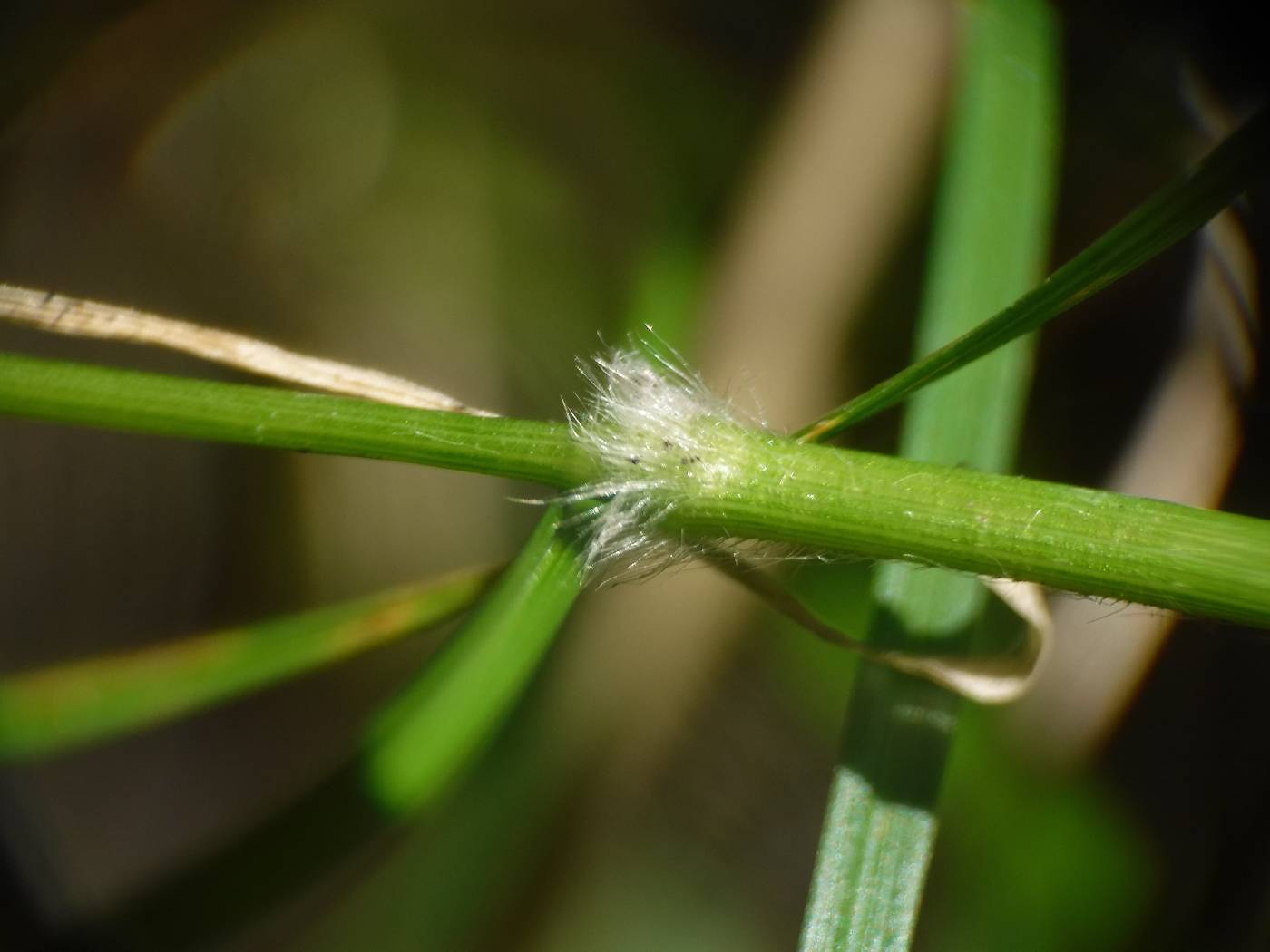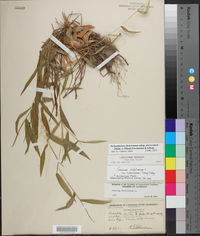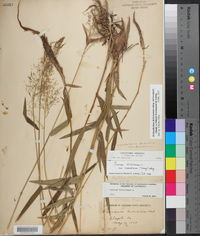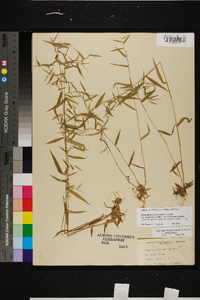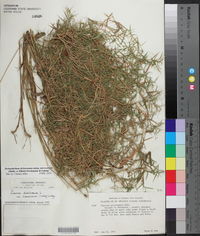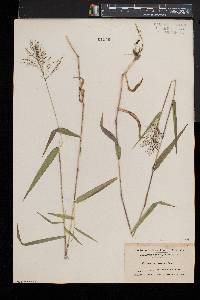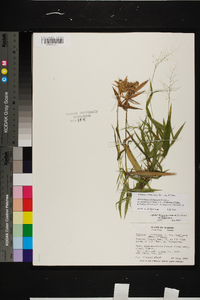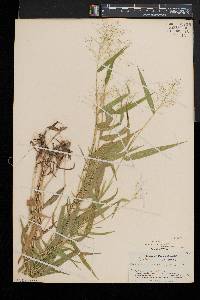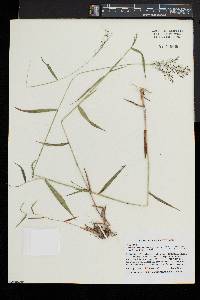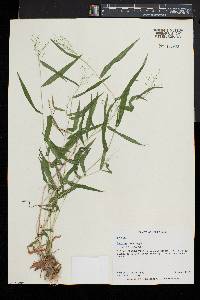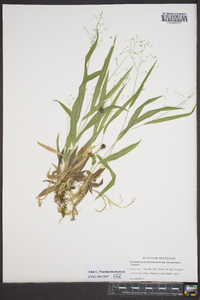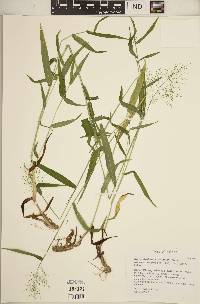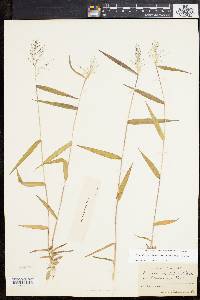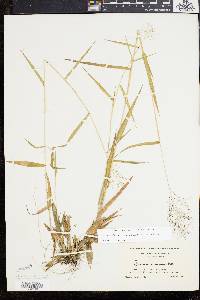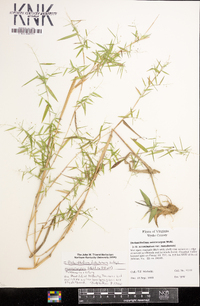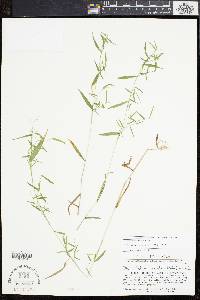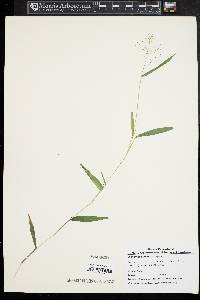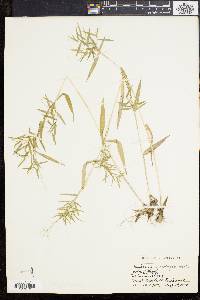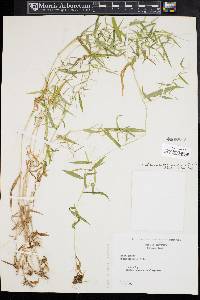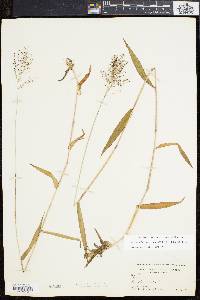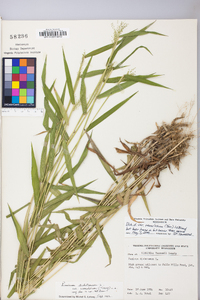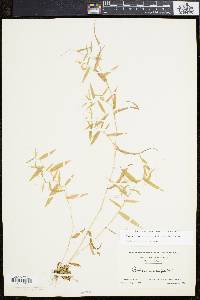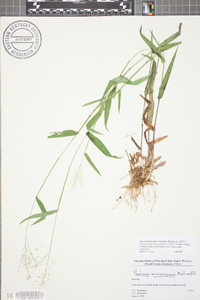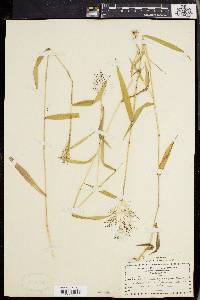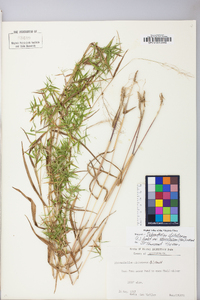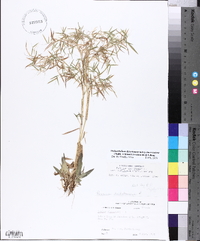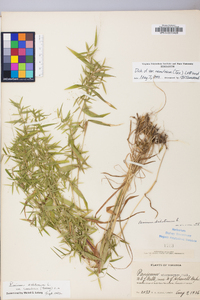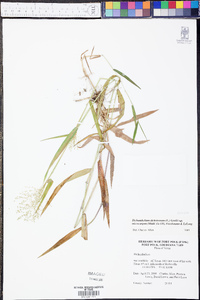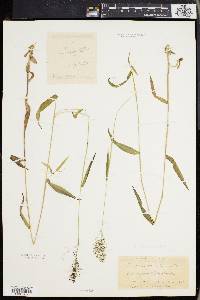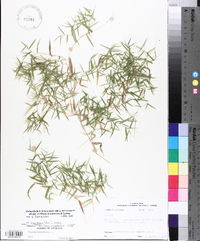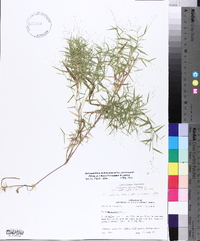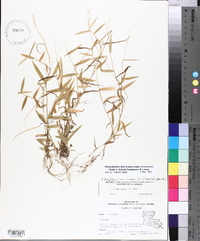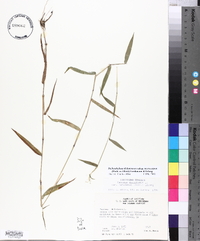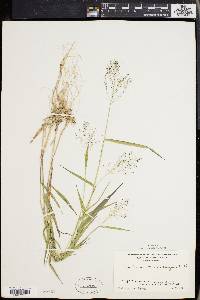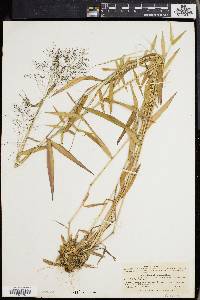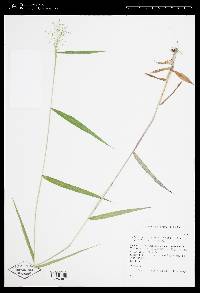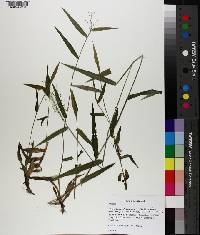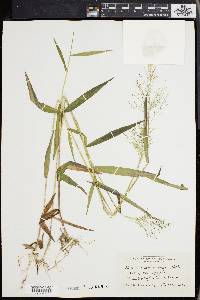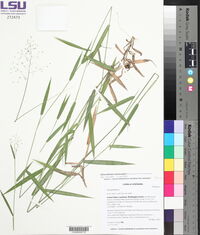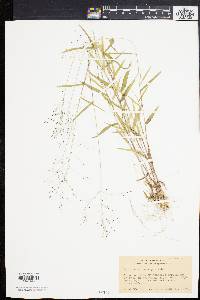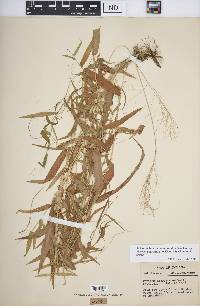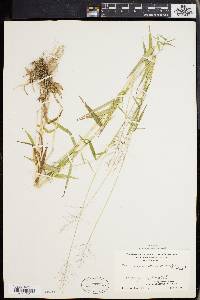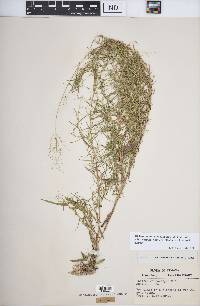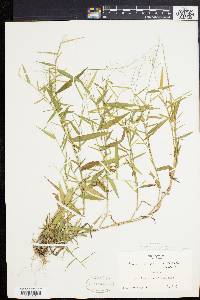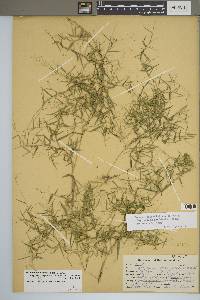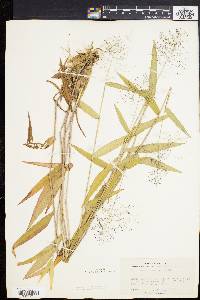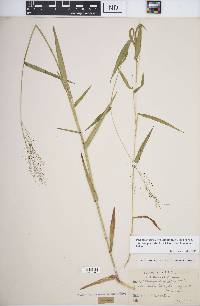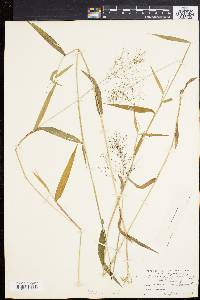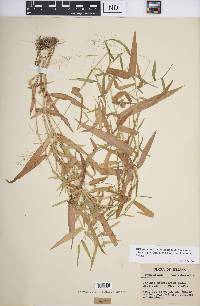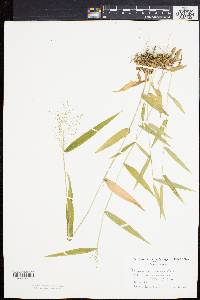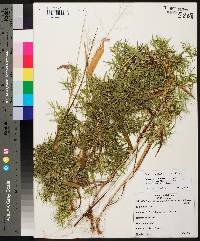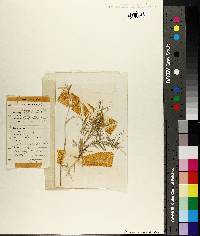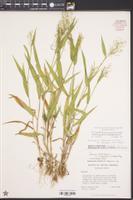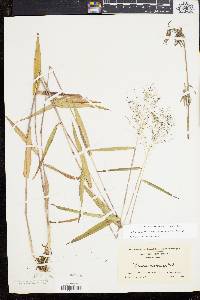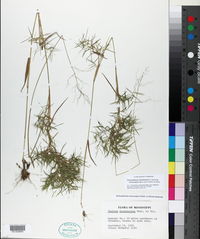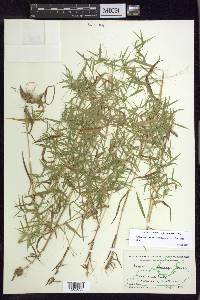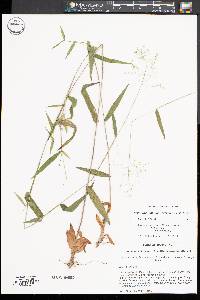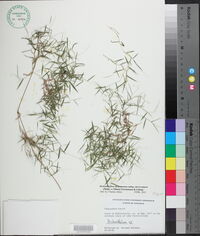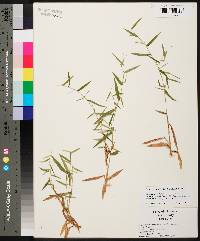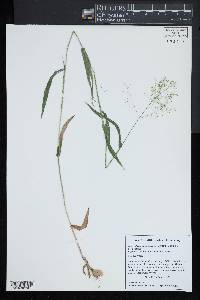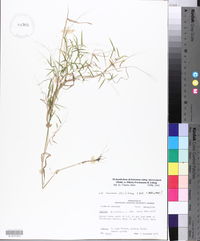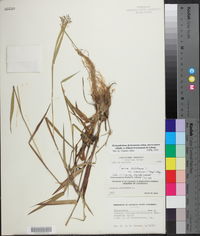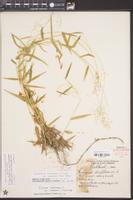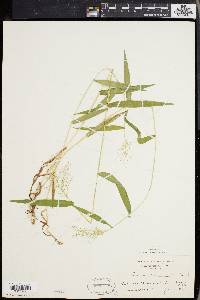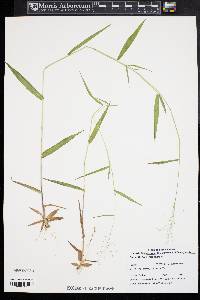
|
|
|
|
Family: Poaceae
Cypress Witch Grass
[Dichanthelium microcarpon (Muhl. ex Elliot) Mohlenbr.] |
Culms 30-100 cm, slender, erect or geniculate; fall phase freely branching from all nodes, reclining from masses of branchlets and numerous reduced, ciliate blades and secondary panicles; nodes conspicuously bearded with retrorse hairs. Sheaths usually glabrous, lowermost sheaths sometimes sparsely pubescent, occasionally with whitish spots between the veins, ciliate along the margins; blades 5-14 cm long, 5-14 mm wide, thin, spreading to reflexed, glabrous on both surfaces, bases with few to many papillose-based cilia. Panicles 5-12 cm, well-exserted, dense. Spikelets 1.5-1.8 mm, usually glabrous, rarely slightly pubescent. Lower glumes usually less than 1/4 as long as the spikelets; upper glumes usually shorter than the lower lemmas; upper florets 1.3-1.6 mm long, 0.6-0.8 mm wide, subacute. 2n = 18. Dichanthelium dichotomum subsp. microcarpon grows in wet woods, swamps, and wetland borders. It is a widespread subspecies, extending from southern Michigan to Massachusetts and south to eastern Oklahoma and Texas and throughout the southeast to central Florida. Perennial herb, tufted 30 cm - 1 m tall Inflorescence: a terminal, branched arrangement of spikelets (panicle). Primary panicles atop the culms, dense, 5 - 12 cm long, long-exserted, wiry-branched. Secondary panicles (when present) atop the branches. Fruit: a caryopsis, indehiscent, enclosed within the persistent lemma and palea. Culm: upright or with knee-like bends, 30 cm - 1 m long, slender, round in cross-section, hollow. Nodes bearded with hairs pointing down. Fall phase freely branching from every node, reclining, with masses of branchlets, producing numerous reduced leaf blades and secondary panicles. Spikelets: 1.5 - 2 mm long, ellipsoid to reverse egg-shaped, prominently veined. Basal leaves: in a rosette. Blades shortly egg-shaped to lance-shaped, distinct from stem blades. Stem leaves: four to seven, alternate, two-ranked. Sheaths usually shorter than internodes, sometimes sparsely hairy on lowermost sheaths, occasionally white-spotted between veins, fringed with short hairs. Ligules about 0.5 mm long, composed of hairs. Blades thin, spreading to reflexed, distinctly longer and narrower than basal leaves, 5 - 14 cm long, 5 - 14 mm wide, lance-shaped, parallel-veined, fringed with bumpy-based hairs basally. Glumes:: Lower glumes usually less than one-fourth as long as spikelets, blunt to pointed. Upper glumes usually shorter than lower lemmas, rounded to pointed at the apex. Lemmas:: Lower lemmas similar to upper glumes. Upper lemmas longitudinally lined, shiny, with rolled-up margins above. Paleas:: Lower paleas shorter than lower lemmas, thin. Upper paleas longitudinally lined. Florets:: Lower florets sterile. Upper florets bisexual, stalkless, about 1.5 mm long and 0.7 mm wide, ellipsoid with a nearly pointed apex, plump. Anthers three. Stigmas red. Similar species: No information at this time. Flowering: May to October Habitat and ecology: No information at this time. Occurence in the Chicago region: native Etymology: Dichanthelium comes from the Greek words di, meaning twice, and anth, meaning flowering, referring to plants that may have two flowering periods. Dichotomum means "forking in pairs." Microcarpon means tiny-fruited. Author: The Morton Arboretum From Flora of Indiana (1940) by Charles C. Deam Rather frequent in the southern third of the state. It seems to prefer a slightly acid soil and is usually found in low, flat woods with sweet gum, pin oak, and beech, although it is sometimes found in drier situations with different associates. The Tryon specimen from La Porte County lacks the white spots on the sheaths. The report of this species from Marshall County is evidently an error in determination; its habitat is not in that area, and the detailed description given by the collector does not apply to this species. ...... Indiana Coefficient of Conservatism: C = 4 Wetland Indicator Status: FAC |

